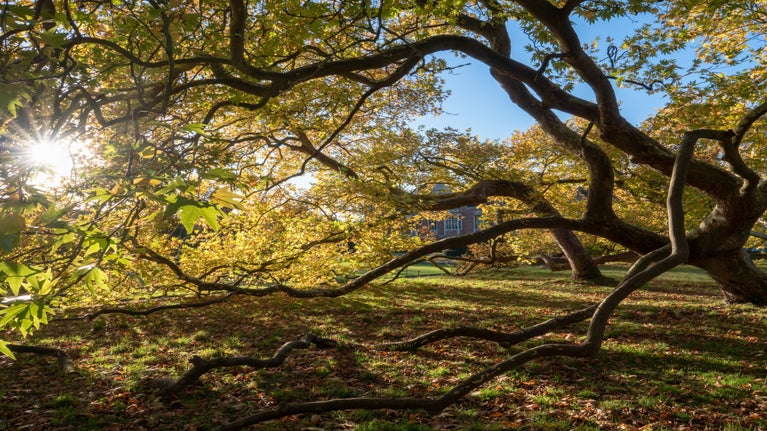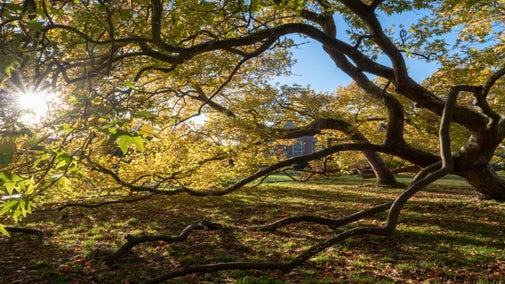
Trees and plants
We care for 25,000 hectares (61,776 acres) of woodland, 135 wild landscape sites and more than 200 gardens, and have as many wonderful stories to tell.

Discover how a mammoth conifer, known as 'the big tree', sparked a craze in British horticultural circles and a race to be the first to name the tree.
A feverish William Lobb, racing back to England in the autumn of 1853, knew he held the raw material of a legend. The seeds he carried aboard ship contained an epic tale, dwarfed only by the mythic proportions of the tree that had produced them.
Though a seasoned plant collector for the Veitch Nurseries, he had seen nothing in his travels to prepare him for his first glimpse of the ‘big tree'.
In 1852, Lobb visited San Francisco, where he first heard of mammoth conifers in the foothills of California’s Sierra Nevada range. Lobb knew this ‘vegetable monster’ would trigger an enormous craze in British horticultural circles and hurried to the Sierra foothills too see the remarkable tree in its native habitat.
He found about 90 towering trees and reported that a felled tree had measured 300 feet with a diameter of over 29 feet near its base. A section of this 3,000-year-old tree was displayed in San Francisco where its hollowed (and carpeted) slice of trunk could comfortably accommodate a piano with an audience of 40.
Lobb collected seed, shoots, and seedlings. In fewer than two years’ time these would give rise to thousands of saplings, snatched up by wealthy Victorians to adorn great British estates.
The larger-than-life conifer, so symbolic of the vast American wilderness, suddenly became a status symbol in Britain.
Back in California, the mammoth conifers were presented as tourist attractions to the American public. The 'big tree', as they dubbed it, was vastly appealing to the masses flocking from far and wide to visit Calaveras Grove, sleep in its hotel and waltz across its expansive tree stump, turned dance floor.
Shortly after the discovery of the big tree came the question of what to name it.
Dr. Kellogg, the founder of the California Academy of Sciences, was instrumental in the discovery of the tree. He planned to name the tree the 'Washingtonia' in honour of America’s revered first President.
Kellogg only needed to complete his set of herbarium specimens to register the new species. Lobb knew this, and quickly returned to England with the required specimens before his rival could carry out his plans.
To add insult to injury, John Lindley of the Horticultural Society, who was assigned the task of naming the introduction, opted for the decidedly un-American Wellingtonia gigantea to commemorate the lately deceased Duke of Wellington.

This was greeted with indignation across the pond, sparking a debate that would rage on for years.
Ultimately, a scientific name settled the argument. Sequoiadendron giganteum was chosen to reflect the tree’s botanical link to the coastal or California redwood, Sequoia sempervirens.
That we persist in calling it the Wellingtonia, is a testament to its value as a living monument.
You can see towering examples of S. giganteum at close range at:

We care for 25,000 hectares (61,776 acres) of woodland, 135 wild landscape sites and more than 200 gardens, and have as many wonderful stories to tell.
Ancient trees are links to our past, they're species-rich habitats that support countless other organisms. Discover what makes a tree ancient and how to recognise them.

Learn how to identify trees from their leaves, bark and shape, how to tell similar species apart and how they change as they get older.

Learn about how we protect the rarest and most historically significant plants in our care at the Plant Conservation Centre.

Discover some of the finest historic gardens in our care and how they were shaped by Victorian plant collectors, as they gathered plant species from across the globe.

Discover the world of trees and plants across the 25,000 hectares of woodland, 135 landscape sites and more than 200 gardens in National Trust care.
